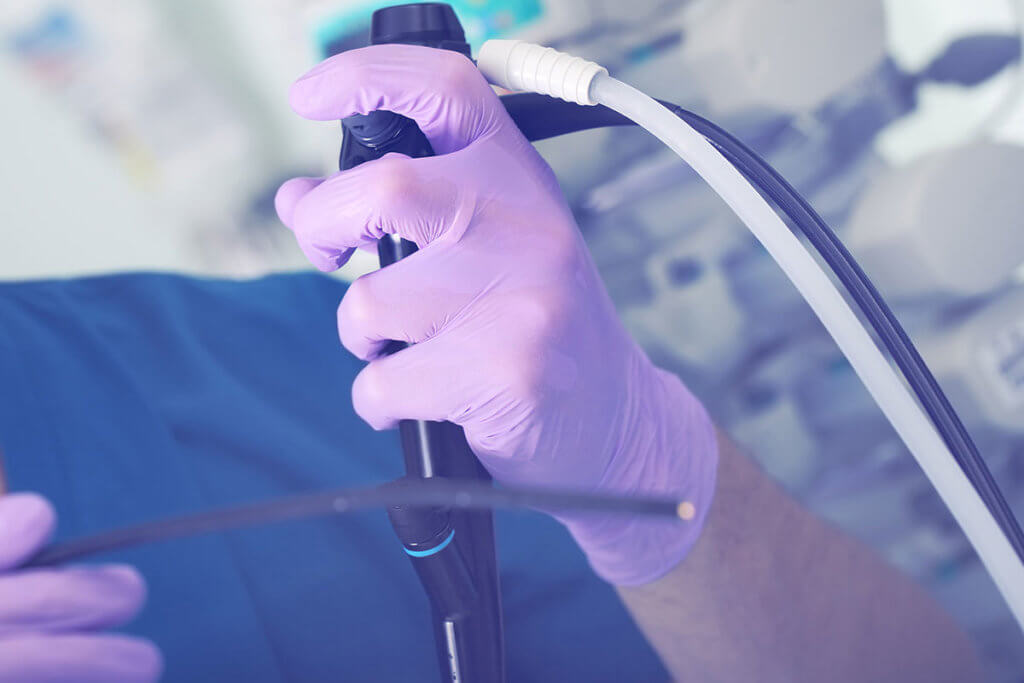
Endoscopy-related infections are costly to hospitals and can be detrimental to patients.
Studies have shown a 1 to 3 percent rate of immediate, procedure-related complications due to bronchoscopy, but because infection reports are scattered and largely anecdotal, there is a “sense of complacency regarding infection control in the bronchoscopy suite.”
The Centers for Disease Control and Prevention notes that while the reported number of infections caused by bronchoscopy is very small, the incidence is likely underestimated as many cases go unrecognized or unreported.
Bronchoscopy-related infections can be categorized into two groups—endogenous and exogenous—though little research is available that breaks down the prevalence or relative risk of one over the other.
Endogenous infections result from the procedure itself, whereby a patient is exposed to their own microbial flora. For example, a sedated patient during flexible bronchoscopy may breathe in oral secretions during the procedure and contract pneumonia.
In addition, while the lungs do not typically harbor resident harmful flora, the mouth does, and a flexible bronchoscope must pass through the mouth to get to the lower airways.
As Dr. Atul Mehta of the Cleveland Clinic concluded in a 1999 review of bronchoscopy-related infections, the “mouth and pharynx are abound with bacterial flora” so it’s possible for bronchoscopy to transmit organism from the upper to lower airways. Distal spread of infection could be a logical explanation for post-bronchoscopy fever, Mehta noted in his analysis.
A 2003 study in the American Journal of Respiratory and Critical Care Medicine concluded that the distal spread of infection during bronchoscopy is “rarely clinically significant, although the exact incidence is unknown.”
One of the more documented cases of endogenous infections post-endoscopy is patients developing bacteremia as a result of endoscopic retrograde cholangiopacreaticography (ERCP). Despite the risk of this, or any exogenous infections that may result from a contaminated duodenoscope during ERCP, patients should be aware that the risk of not doing the procedure far outweighs any potential risk from the procedure.
Similarly, when it comes to flexible bronchoscopy, patients should be aware of the relatively low risk of infection that results from these procedures. However, infections can and do happen. Unlike exogenous infections, however, endogenous infections cannot be prevented by proper disinfection procedures.
Exogenous infections in endoscopy are often traced back to the inadequate disinfection of endoscopes.
The most common exogenous organisms associated with flexible bronchoscopy are Pseudomonas aeruginosa, an organism with multi-drug resistant strains, and mycobacteria.
P. aeruginosa is one of the most common organisms to be found on flexible endoscopes. It can survive reprocessing if found in biofilm, as biofilm acts as a protective shield against most commonly-used disinfectants.
In a 2019 survey, conducted by Mehta and Lawrence Muscarella, of LFM Healthcare Solutions, found that a dozen “superbug” infections could be linked back to flexible bronchoscopes since 2012. While duodenoscopes used in ERCP have garnered a lot of media and FDA attention after recent reported instances of infection transmission from those instruments, Mehta and Muscarella argued that there is also substantial cause for concern of MDRO transmission during bronchoscopy.
Reprocessing failures may be the result of a number of factors, including:
Flexible bronchoscopes have small lumens and delicate components that are vulnerable to damage and subsequent biofilm formation. These endoscopes are notoriously difficult to clean and disinfect between uses, and the guidelines for doing so are extensive and complicated.
The entire process may take up to two hours, and improper handling of flexible bronchoscopes post reprocessing could contaminate the equipment. Though reprocessing is a laborious and complicated process, proper adherence to guidelines and procedures is the best way to prevent exogenous infection.
Approximately 500,000 bronchoscopies are performed in the U.S. annually, and the rate of reported infection is relatively low. However, many infections may go unreported due to a lack of surveillance.
One way to mitigate risk from exogenous infection is to use sterile, single-use flexible bronchoscopes.


